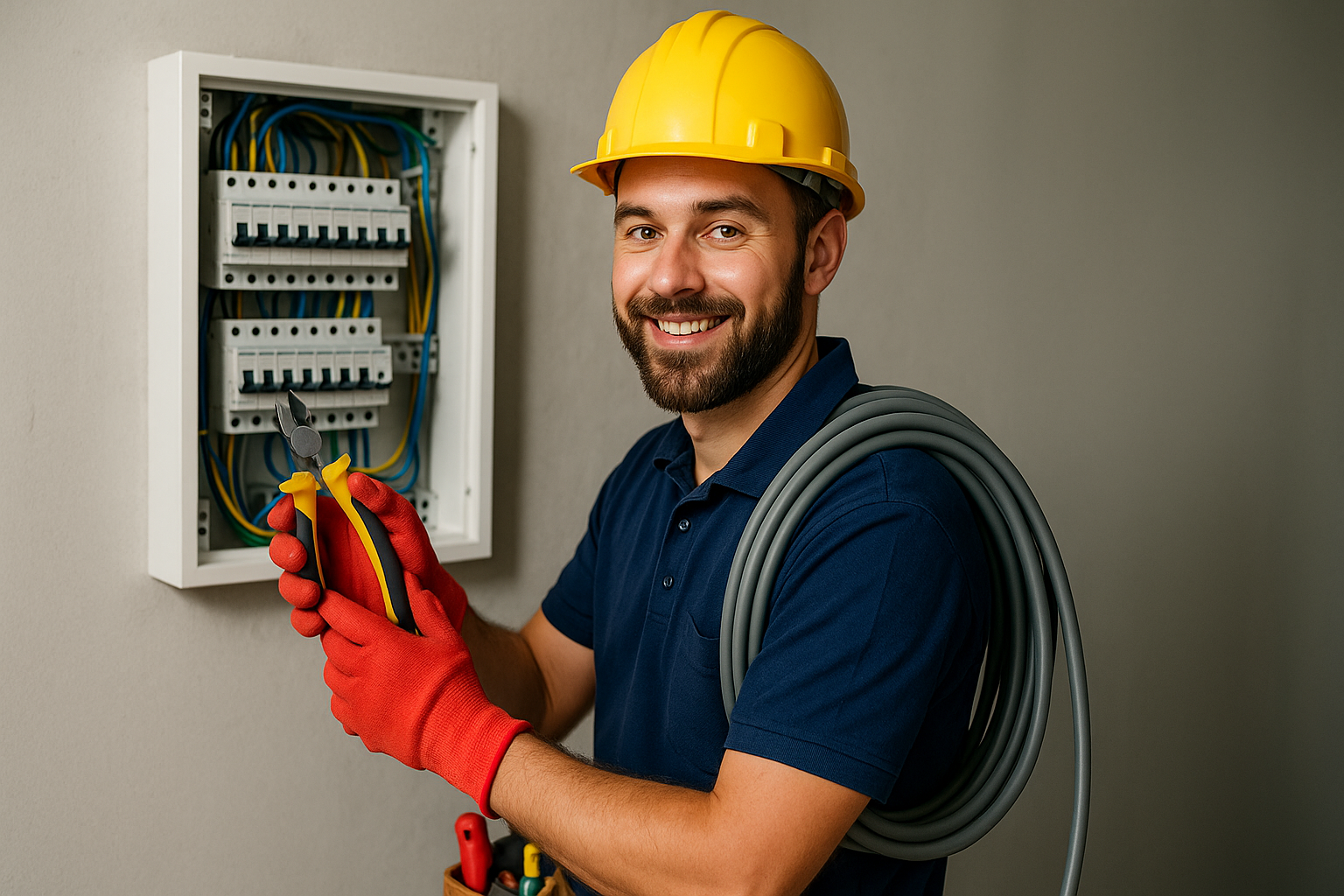Electricity is one of the most important parts of modern life – it powers our homes, lights our rooms, charges our devices, and makes everyday tasks easier. But while it’s incredibly useful, it can also be extremely dangerous if not handled properly. For adults, using electricity safely is second nature. For children, however, their natural curiosity and limited understanding of danger can put them at risk.
That’s why teaching kids about electrical safety from an early age is one of the most important things you can do as a parent or guardian. When children understand the basics, they’re more likely to avoid dangerous situations and develop safe habits that last a lifetime.
Here’s a complete guide on how to teach kids about electrical safety in a way that’s simple, effective, and age-appropriate.
Start With the Basics: What Electricity Is and Why It’s Dangerous
Before kids can understand how to stay safe, they need to know what electricity is and why they need to be careful with it. Use simple explanations that match their age and comprehension level.
For younger children:
-
Explain that electricity is what makes lights turn on, TV work, and toys move.
-
Tell them that while it’s very helpful, it can also hurt them badly if they don’t use it the right way.
For older kids:
-
Talk about how electricity flows through wires and powers devices.
-
Explain that our bodies can conduct electricity, which is why contact with live wires or outlets is dangerous.
Use real-life examples: “If you touch an electrical outlet, it’s like touching lightning — and that can cause a serious injury.”
Teach Them the “Do’s” and “Don’ts” of Electrical Safety
Kids remember rules better when they’re clear, simple, and repeated often. Create a list of easy-to-follow “Do’s” and “Don’ts” and review them together.
Do’s:
-
Do ask an adult for help before plugging or unplugging anything.
-
Do keep electrical devices away from water.
-
Do tell an adult if you see sparks, smoke, or a damaged cord.
-
Do hold plugs, not cords, when unplugging.
-
Do turn off and unplug devices after using them.
Don’ts:
-
Don’t touch outlets, switches, or plugs with wet hands.
-
Don’t stick fingers, toys, or objects into outlets.
-
Don’t pull on cords or yank them from the wall.
-
Don’t climb trees or poles near power lines.
-
Don’t use devices if the cord is damaged or frayed.
Consider printing these rules and placing them near outlets or in your child’s playroom as a daily reminder.
Show, Don’t Just Tell
Children learn best through demonstration. Instead of just explaining safety rules, show them how things work.
Examples of hands-on lessons:
-
Demonstrate how to unplug a device by pulling on the plug, not the cord.
-
Show them the safe distance to keep from outlets and appliances.
-
Use a spray bottle and a lamp (unplugged) to explain why water and electricity don’t mix.
You can also create fun, supervised experiments or watch age-appropriate videos about how electricity works. Visual learning helps kids understand abstract concepts more clearly.
Teach Outlet and Cord Safety
Outlets and cords are some of the biggest electrical dangers for young children. Kids are naturally curious about holes and plugs, so they must learn early on that outlets are not toys.
Safety tips to teach:
-
Never put anything inside an outlet.
-
Only adults should plug in devices.
-
Don’t touch outlets if they’re cracked, loose, or warm.
For added safety, install tamper-resistant outlets or use outlet covers in areas accessible to young children. These physical barriers help prevent accidents while reinforcing the safety lessons you teach.
Emphasize Water and Electricity Don’t Mix
Children need to understand that water is one of electricity’s biggest dangers. Even a small amount of water can conduct electricity and cause a severe shock.
Ways to teach this concept:
-
Explain why devices like hairdryers and radios should never be used near bathtubs, sinks, or pools.
-
Teach kids to always dry their hands before touching plugs or switches.
-
Create a simple demonstration: Show how water can conduct electricity using a battery-powered circuit and a light bulb (with adult supervision).
Reinforce the rule: “If it’s wet, keep electricity away.”
Discuss Outdoor Electrical Safety
Electricity dangers aren’t limited to inside the home. Outdoor electrical equipment and power lines can also pose serious risks, so it’s important to include outdoor safety in your lessons.
Outdoor rules kids should know:
-
Stay far away from power lines and electrical poles.
-
Never climb trees or fly kites near power lines.
-
Don’t touch downed power lines — even if they look harmless.
-
Keep water balloons, drones, and sports equipment away from power cables.
If they see a fallen power line, teach them to stay far back and call an adult immediately.
Make Safety Fun With Games and Stories
Teaching kids about electrical safety doesn’t have to be boring. Using creative approaches like games, quizzes, or stories can help the lessons stick.
Ideas for fun learning:
-
Create a safety scavenger hunt around the house where kids identify unsafe electrical situations (e.g., a frayed cord or an overloaded power strip).
-
Tell a story about a character who learns the importance of staying safe around electricity.
-
Use coloring books, puzzles, or online games focused on electrical safety (many utility companies offer free resources for children).
Making safety education interactive helps children engage with the topic and remember it better.
Set a Good Example
Children imitate what they see. If they notice you using electricity carelessly, they’re more likely to do the same. Practicing safe habits yourself is one of the most effective ways to teach them.
How to lead by example:
-
Always unplug appliances properly and avoid overloading outlets.
-
Keep electrical cords organized and away from water.
-
Turn off devices before cleaning or repairing them.
-
Explain your actions as you do them, so kids understand why safety matters.
For example, say, “I’m unplugging this lamp before changing the bulb because it’s safer that way.”
Create a Plan for Emergencies
Even with all the right precautions, accidents can still happen. Teaching your child what to do in an emergency can make a big difference in preventing injuries or saving lives.
Things they should know:
-
How to call emergency services (teach them to dial 911 and explain when to do it).
-
Never touch someone who’s been shocked – call for help instead.
-
If something catches fire, leave the room immediately and alert an adult.
Review these steps regularly so your child knows what to do under pressure.
Reinforce and Review Regularly
Teaching electrical safety isn’t a one-time lesson – it’s an ongoing conversation. Kids forget things, grow older, and encounter new situations, so it’s important to repeat and update lessons as they age.
-
Review safety rules every few months.
-
Adjust explanations as they become more capable of understanding complex ideas.
-
Celebrate safe behavior to encourage good habits.
The more often they hear and practice safety rules, the more naturally they’ll follow them.
Start Early, Stay Consistent
Electrical safety might seem like a complicated topic, but kids can learn it easily with the right approach. By breaking concepts down into simple lessons, using hands-on demonstrations, and reinforcing safe habits regularly, you’re not just preventing accidents – you’re teaching your children lifelong safety skills.
Remember: kids are naturally curious, and curiosity is a good thing as long as it’s guided in the right direction. With your help, they’ll learn how to enjoy the benefits of electricity safely and responsibly, now and for the rest of their lives.

